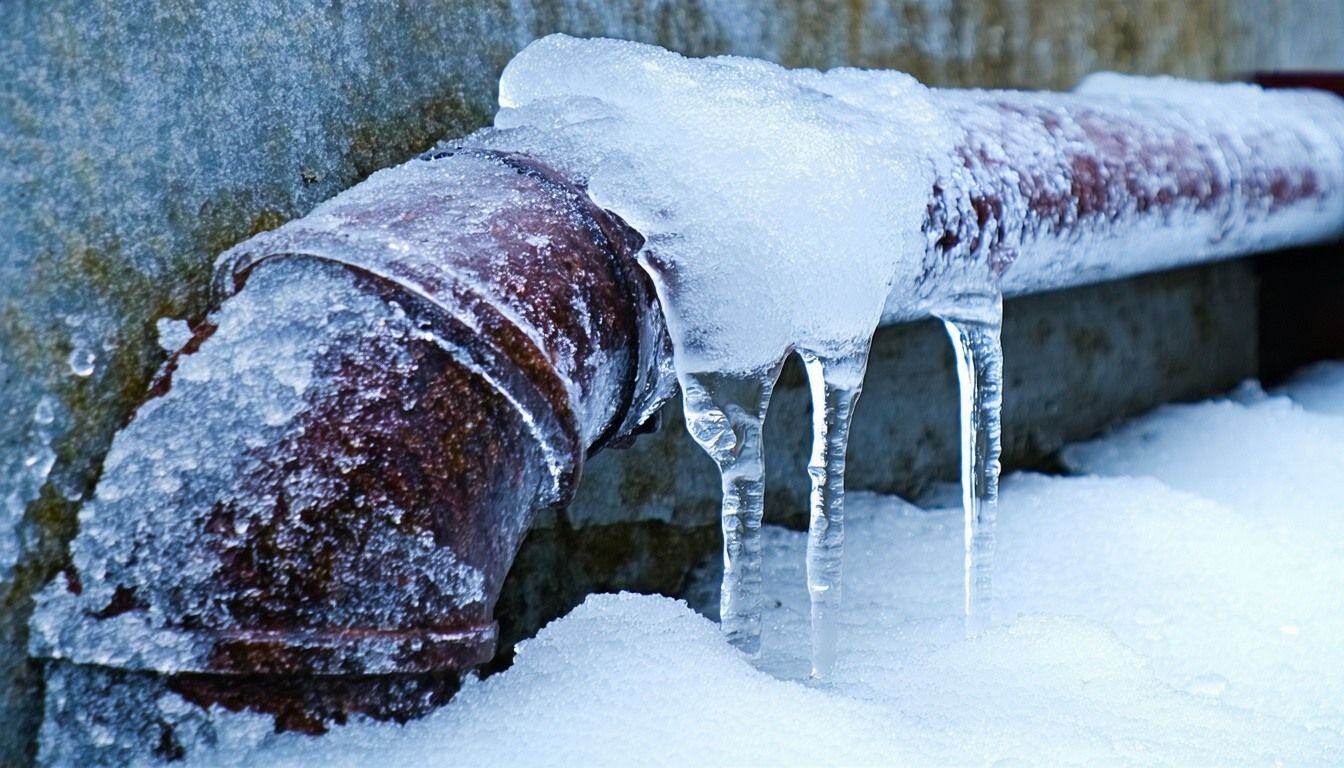How to Prevent Frozen Pipes


It’s a nightmare many homeowners dread every winter – frozen pipes.
Having your pipes freeze can be a nightmare in and of itself, but if those frozen pipes burst, you’re in for a headache and out a lot of money to fix it, as well as any damage it causes.
We here at RetroFoam of Michigan aren’t plumbers, but we do know exactly how you can prevent frozen pipes. We have been insulating homes with foam insulation since 2002 and know that insulation is just one way to keep your pipes from freezing.
We’re all about educating homeowners, so we’re going to discuss how to thaw frozen pipes and how to prevent them from freezing in the future.
Key Points:
• Frozen pipes can burst and cause thousands of dollars in water damage.
• The best way to prevent frozen pipes is to block cold air from reaching your plumbing and keep water moving during extreme cold.
• Homeowners can thaw frozen pipes safely using gentle heat sources -- never an open flame.
• Long-term protection comes from improving your home's insulation and air sealing.
• Foam insulation helps keep pipes inside the conditioned space in the home, reducing the risk of freezing and bursting.
Why Pipes Freeze
- Cold air reaches the plumbing. Exposed pipes or pipes in uninsulated areas cool quickly.
- Lack of insulation and air sealing. Drafts accelerate freezing, especially during extreme cold weather.
- Water expands as it freezes. This pressure is what causes pipes to burst.
- Pipes sit outside the conditioned space. When heat can't reach the pipe, the risk of freezing skyrockets.
How to Tell Your Pipes Are Frozen
The most common sign is reduced water flow -- usually just a trickle from a faucet.
Before thawing, confirm the pipe hasn't burst. If you see a break, shut off the main water valve immediately.
How to Thaw Frozen Pipes
Pipes freeze most often in unheated areas like attics, crawl spaces, basements, garages, and behind exterior walls.
Here's how you can thaw your frozen pipes safely.
1. Turn on the Faucet
Running water helps melt the blockage.
This is an easy first step while you work on thawing the pipe.
2. Apply Gentle Heat
Safe ways to thaw a frozen pipe include:
- A heating pad
- A hairdryer
- A portable space heater
- Towels soaked in hot water
Never use a blowtorch or open flame, as this can damage the pipe or start a fire.
3. Check All Faucets
If one pipe froze, others may be close to freezing, too.
Walk through your home and test each faucet once the flow is restored.
4. Call a Licensed Plumber
If you can't locate the frozen section or can't thaw it safely, it's time to bring in a professional.
How to Prevent Frozen Pipes (Before Cold Weather Hits)
Improving your home's resilience ahead of winter is the best approach to prevent frozen pipes.
Insulating exposed plumbing can make a huge difference. The Red Cross recommends insulating water lines in the crawl space, basement, garage, attic, and along exterior walls.
Pipe sleeves, heat tape, and even newspaper in a pinch can work to slow heat loss.
Preventing Frozen Pipes During Cold Weather
When temperatures plunge, take these steps from Consumer Reports to prevent frozen pipes from bursting.
- Keep garage doors closed if water lines run through the area.
- Let faucets drip to keep water moving -- moving water is harder to freeze solid.
- Maintain a consistent thermostat setting, even when away from home. This reduces the chance of pipes freezing in the coldest overnight hours.
- Open cabinet doors to allow warm air to reach pipes under kitchen and bathroom sinks.
These simple steps are some of the most effective answers to "How do you prevent frozen pipes?"
How to Prevent Frozen Pipes from Bursting with Better Insulation
A long-term solution is to create a better air barrier in your home so cold air can't reach your plumbing.
A material like foam insulation offers several benefits for protecting your pipes.
- Stops cold air infiltration
- Creates an air-sealed building envelope
- Brings pipes into the conditioned space
- Reduces the risk of frozen pipes and bursting during extreme cold
Traditional options like fiberglass and cellulose still allow for air movement. Foam insulation provides the air seal needed to keep temperatures more stable and protect plumbing.
If you want to better understand how tightening your building envelope prevents frozen pipes and boosts comfort and energy efficiency, visit our Learning Center.
Related Articles
Will Spray Foam Keep Pipes From Freezing?
How to Fix Cold Kitchen Cupboards with Foam Insulation
About Amanda Emery
Amanda previously has worked as a breaking news and crime reporter, TV news producer, and editor in Flint and Detroit. Throughout her career as a journalist, she has won several awards from The Society of Professional Journalists - Detroit Chapter and the Michigan Press Association. As part of the RetroFoam of Michigan family, Amanda uses her experience as a journalist to write content that will help educate homeowners on the benefits of foam insulation. When Amanda isn’t writing, she’s spending time with her husband and rescued huskies. She also loves knitting, making art, cooking, and hosting dinner and a movie night for friends and family.


